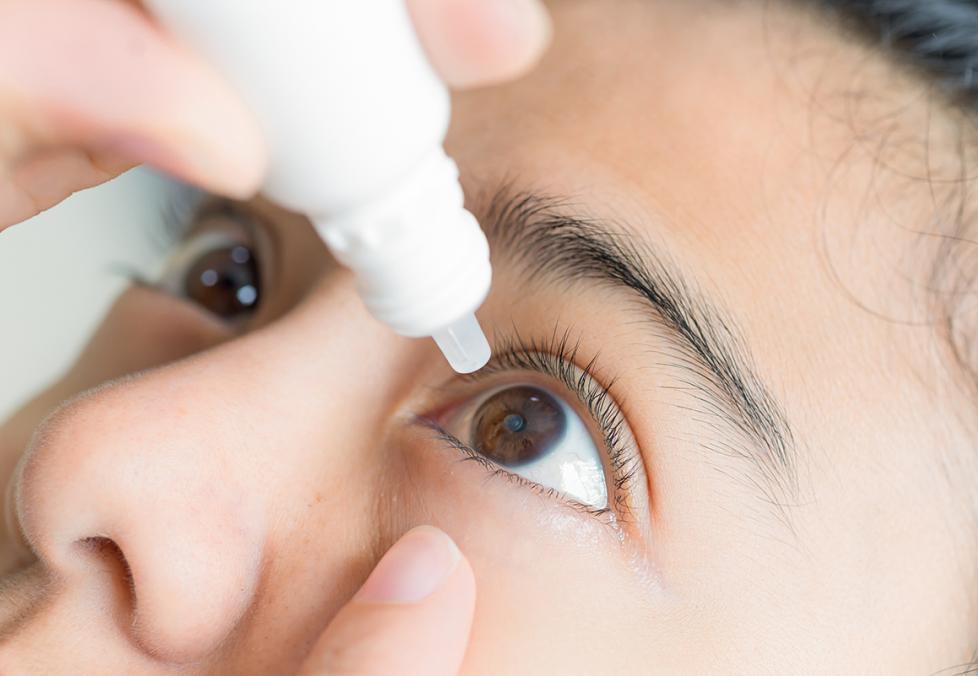
Some can be treated at home, while others require a trip to the eye doctor. Here’s what you need to know to protect your eye health.

First you feel a tingle in your eye, followed by itchiness and swelling. You try using eye drops and cool compresses, but nothing helps. You might have an eye infection — a umbrella term for different kinds of eye conditions caused by bacteria, viruses, fungi, or parasites.
Some eye infections (such as pink eye and styes) aren’t usually serious. But others are, and many need a doctor’s intervention to treat.
“If your symptoms don’t improve after a few hours, or they seem to be getting worse, that may be a sign to go see an optometrist soon,” says Zahraa Khan, O.D., F.A.A.O. Dr. Khan is an optometrist who practices at America’s Best Contacts & Eyeglasses in Cuyahoga Falls, Ohio.
“If you’re experiencing loss of vision, pain, or sensitivity to light (photophobia), get evaluated right away,” adds Dr. Khan.
Different kinds of eye infections and infection-related eye conditions can look and feel very different. Here are five types to have on your radar. Knowing the symptoms of each one can help get you back to feeling — and seeing — your best.
Have questions about your eye health or vision? Your America’s Best optometrist is here to help. Find an exam time that fits your schedule!
1. Blepharitis
Blepharitis is an inflammation of the eyelid that can lead to infection. It’s often caused by a clogged oil gland or bacteria on your eyelids or lash line. But it could also be caused by an underlying skin condition, such as rosacea or dandruff.
“A lot of people have blepharitis but may not realize it until they become symptomatic,” says Dr. Khan.
Blepharitis symptoms include:
- Sensitivity to light
- Burning
- Itching
- Redness
- Swelling
- Eyelash loss
- Blurred vision
While there is not currently a cure for blepharitis, there is good news: Blepharitis symptoms can often easily be treated at home.
To ease symptoms, try:
- Artificial tears
- Warm compresses
- Over-the-counter eyelid scrubs
- Avoiding eye makeup or products
If symptoms continue for a few days, call your optometrist. They may prescribe antibiotic or steroid eye drops, ointments, or an oral medication.
Proper eyelid hygiene can help prevent the infection, she adds. Make sure to wash the dirt and oil from your eyelids with a gentle lid wipe or baby shampoo each night. Another daily habit that can help prevent clogged oil glands is to apply a warm compress to your eyes before going to bed.
2. Infectious Keratitis
Keratitis is a serious inflammation or irritation of the cornea. (That’s the transparent part of the eye over the iris and pupil.) Keratitis is an emergency. It can progress rapidly and is among the most common causes of corneal blindness through an infection worldwide.
This infection can be caused by a number of issues, including:
- A virus, bacteria, parasite, or fungi
- Vitamin A deficiency
- Contact lens contamination
Dr. Khan sees more keratitis infections during spring and summer. That’s the time of year that many glasses-wearers opt for contact lenses more often — especially those who are athletic and find contact lenses more comfortable when they’re highly active.
Warmer seasons are also when people tend to encounter contaminated water while swimming in oceans, lakes, and pools.
“Keratitis can be prevented by proper contact lens wear and hygiene,” she says. So, no matter how eager you are to hit the beach, take care when sterilizing, storing, and using your contacts. And always wash your hands before touching your eyes.
Symptoms of keratitis include:
- Eye pain
- Sensitivity to light
- Blurred or decreased vision
- Redness
- Eye discharge
If you think you may have keratitis, see an eye doctor immediately. Treatment may involve an oral medication or antibiotic, antiviral, antifungal, or antiparasitic eye drops.
3. Endophthalmitis
Endophthalmitis is an uncommon but serious bacterial infection inside the eye that shows up in patients after eye surgery (such as for cataracts) or after an eye injury, according to the American Society of Retina Specialists.
Sometimes, a fungus or an infection elsewhere in the body spreads to the eye, leading to chronic endophthalmitis.
Symptoms include:
- Eye pain
- Redness
- Decreased vision
- Sudden sensitivity to light
- White or yellow eyelid discharge
- Corneal cloudiness
Endophthalmitis is treated based on its severity. In milder cases, your doctor may prescribe antibiotic eye drops. Severe or chronic cases may require an injection of antibiotic or antifungal agents or treatment via a surgery called a vitrectomy.

4. Uveitis
Uveitis is a serious condition involving inflammation inside the eye, which can damage the uvea (the eye’s middle layer). It can cause vision loss if not treated.
Sometimes, the inflammation happens only in the eye. Other times, it’s due to an underlying autoimmune disease, such as Crohn’s disease or multiple sclerosis.
Most common in people ages 20 to 60, symptoms of uveitis include:
- Blurry vision
- Floaters
- Eye pain
- Red eyes
- Sensitivity to light
Because it’s uncommon, uveitis is often undetected until complications develop. Once diagnosed, steroids are usually used to curb inflammation and soothe symptoms.
5. Cellulitis
Cellulitis is an infection of the fat and muscles around the eye. It can occur after a lingering sinus infection or if germs enter a cut or scratch near the eye as its healing.
There are two types:
- Orbital cellulitis, which affects the eye socket and is the more serious of the two
- Preseptal cellulitis, which affects the eyelid tissue and is found most often in children
Dr. Khan warns that cellulitis can be tricky to recognize. “It can be mistaken for conjunctivitis, contact dermatitis, or even a chalazion (or eyelid cyst),” she says.
Knowing the symptoms can help you get ahead of this infection. Symptoms of cellulitis include:
- Painful swelling
- Bulging eyes
- Reduced vision
- Painful eye movement
- Fever
- Double vision
- Eyelid discoloration
Cellulitis can’t be treated at home. If you suspect you may have it, see an eye doctor as soon as you can. You’ll likely require antibiotics, possibly delivered intravenously.
The big takeaway, according to Dr. Khan: Many of these serious eye conditions have overlapping symptoms, such as sensitivity to light and redness. An eye exam by your optometrist is the only way to confidently diagnose and treat an eye infection.
See our sources:
Blepharitis facts: Cleveland Clinic & National Eye Institute
Keratits facts: Johns Hopkins Medicine & Mayo Clinic
Endophthalmitis facts: American Society of Retina Specialists & Clinical Microbiology and Infection
Uveitis facts: National Eye Institute
Cellulitis facts: American Academy of Opthalmology
Orbital cellulitis facts: Icahn School of Medicine at Mount Sinai
Periorbital cellulitis facts: Icahn School of Medicine at Mount Sinai

